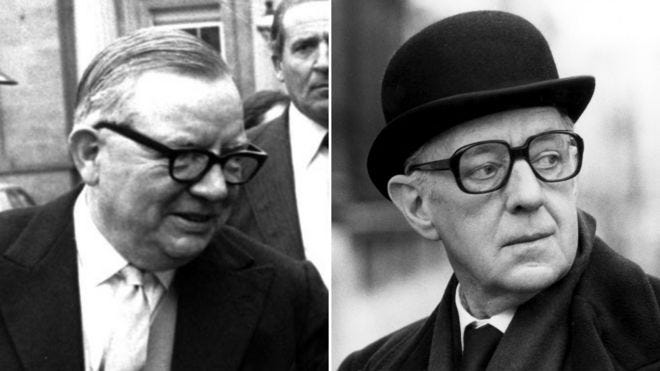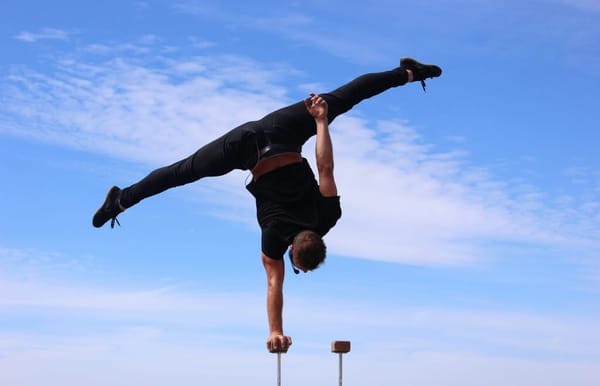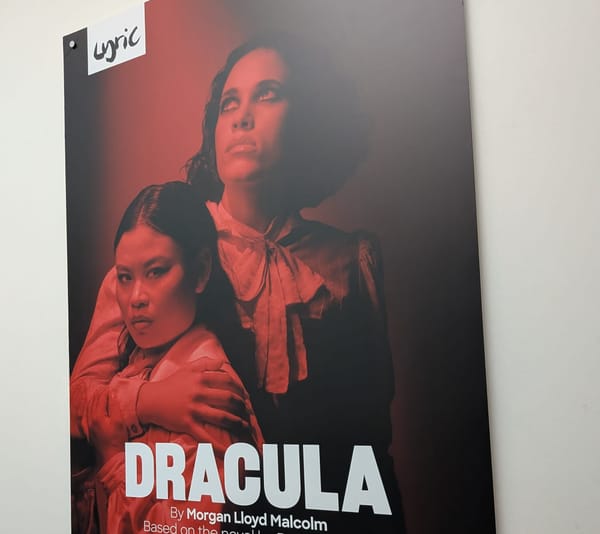Real Spies: Sir Maurice Oldfield
Our first profile will be available as a podcast
Introduction
For many years, Mayfair in London was the spying centre of the capital, for officers at both MI5 and MI6.
In the first few episodes we look behind the names of a few of our most famous spies. We didn’t want to start with Kim Philby or the Cambridge Five. They will have their day. We start today with Sir Maurice Oldfield, M himself.

Key Facts
Dates 1915–1981 (Age 65)
Years Active Entered after the war, retired from MI6 in 1978
Highest Rank Chief of MI6, Major in the British Army
Honours On his retirement, he received the GCMG, Knight Grand Cross of the Order of St Michael and St George, which allowed him to be called Sir Maurice. The award is sometimes amusingly called God Calls Me God as it is the highest rank of that order, and the highest rank achieved by any head of MI6. Earlier, he had won the MBE and the CBE, the Commander of the Most Excellent Order of the British Empire.
Potted Biography
Maurice Oldfield had a good war and was already an MBE when he entered MI6 after the second world war. He had worked with Kim Philby during the war on counter intelligence in Egypt.
He is wrongly accused of being one of the real spies John le Carré used to create George Smiley. But… he was one of the people used by Alec Guinness when preparing to play Smiley on BBC Television. The on-screen appearance of Smiley is very much like photos of Maurice Oldfield with the heavy glasses, although the hats would have been worn by almost all men of similar age and social standing. Nevertheless, the most memorable anecdote in the Oldfield — Smiley canon is when Alec had lunch with Oldfield, a meeting arranged by le Carré. After Oldfield leaves, le Carré picks up the tale…
Alec says: “May we pop back and have a little brandy?” So we go back. He then says: “Do they all wear those very vulgar cufflinks?”
I said: “No.”
“Can you tell me something else? I’ve seen people do that [he mimes someone drinking], and I’ve seen people do that [he mimes again], but I’ve never seen anyone do this [he mimes again]. Do you think he’s looking for the dregs of poison?”
Involvement with Philby? Of course, the Cambridge Spies were MI5 spies, and Oldfield headed the sister service, MI6, usually aligned to the Foreign Office, now the FCO. So he would have been involved and concerned, but not particularly damaged personally by the convulsions brought about by Philby.
But strangely enough Philby and Oldfield did meet and work together during the war, and later on, Oldfield was among the first to suspect that Philby was with the Russians. We know that Philby respected Oldfield. Writing in My Silent War, he calls him “formidable”. Philby will be the topic of at least one future article.
However, Oldfield is also blamed as the inspiration behind Ian Fleming’s M. The letter cannot be a coincidence, or can it? There were a lot of people with an M initial around MI6 in those days. At least Bond is MI6, so this tale does bear scrutiny. Although the very good biography of Oldfield is titled “C”, as the head of MI6 is often known even now, not “M” who is completely made up. Perhaps all of this interest in Oldfield stems partly from the fact that he was one of, if not the first, MI6 head named while still alive. Since 1994 the post has been widely publicised and naming the head of MI6 now has a statutory footing. The Americans have always published the names of the heads of the CIA and FBI.
Oldfield was a homosexual during the decades when it was illegal in Britain, and such secrets could be used by opponents to blackmail people. His comparatively overt homosexuality led to him being removed from a security role in Northern Ireland that he took up after retirement, on spurious grounds.
Biggest Achievement
For once, Wikipedia has an excellent paragraph on Oldfield’s war which I could not improve.
During the Second World War Oldfield joined the British Army. He was commissioned as a second lieutenant in the Intelligence Corps in July 1943. Most of his wartime service was in Egypt at the headquarters of SIME, the Security Intelligence Middle East, in Cairo. This was primarily a counter-intelligence organisation, whose role was to detect hostile agents in the region and counter their activities. By the end of the war, Oldfield had been promoted to major. In 1946, he was awarded an MBE.
Recommends
The recent book, Spymaster by Martin Pearce is out now. An excellent, thorough and up to date study by Oldfield’s nephew.
C: Biography of Sir Maurice Oldfield by Richard Deacon is out of print. I have read the London Library edition. It was published in 1985. As a result of reading, I will tighten up some of the passages above. As Philby and many others worked for both MI5 and MI6 at various times, it is quite challenging to accurately understand which one they were working for during key moments in their careers. I am aware of the confusion and I will attempt a graphical timeline at some stage in the future. Stay tuned.





